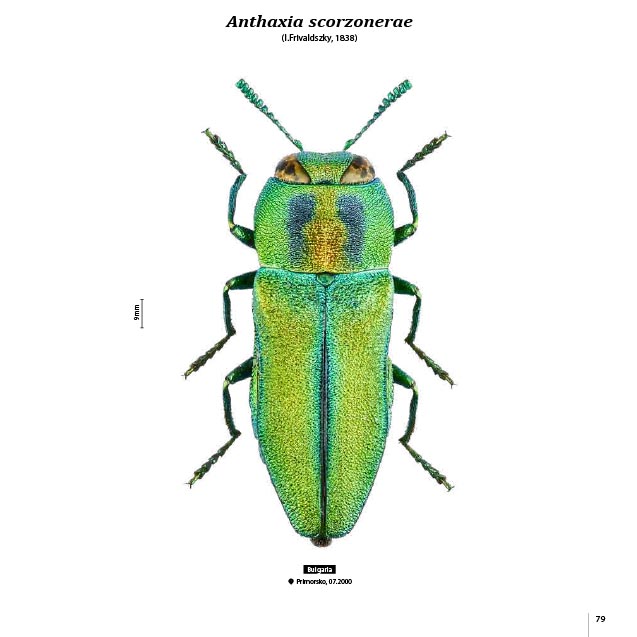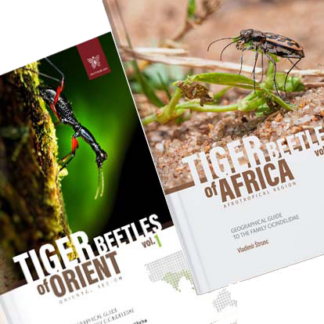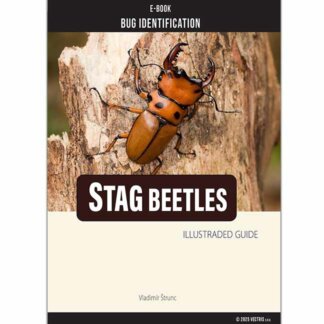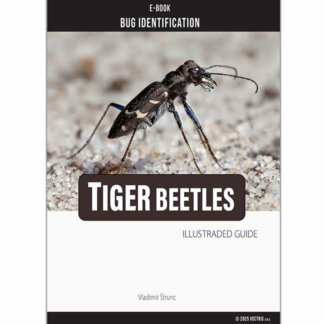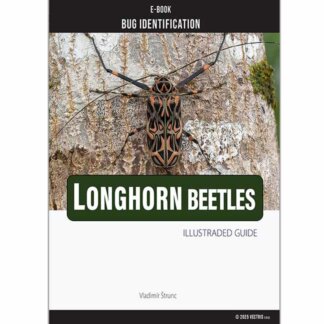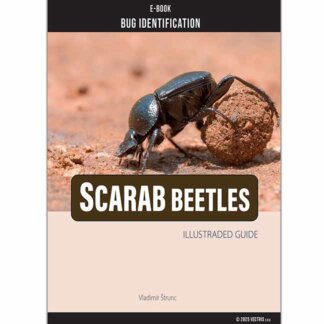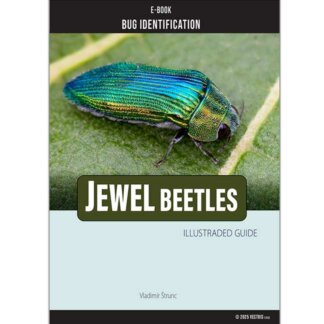The life cycle of Buprestidae, commonly known as jewel beetles or metallic wood-boring beetles, involves four stages: egg, larva, pupa, and adult.
Beetles
Life Cycle Stages
We recommend:
jeweled beetles, ground beetles, longhorn beetles, goliath beetle, stag beetle, carpet beetles
Buprestidae life cycle
Egg Stage:
Adult females typically lay their eggs in crevices of bark or other suitable sites on host plants.
The number of eggs laid can vary significantly among species, with some laying dozens of eggs.
Larval Stage (Flathead Borers):
The larvae, known as flathead borers, are flattened grubs with a distinctive enlarged segment behind the head.
They feed on plant tissue, often boring into wood, bark, leaves, or stems depending on the species.
Larvae develop through several instars and create extensive galleries as they feed.
Books about Beetles
Unique pictorial atlases for identifying Beetles:
(2020) Tiger Beetles of the World, Cicindelidae, Illustrated guide to the genera
(2023) Tiger Beetles of Africa, Cicindelidae, Geographical guide to the family Cicindelidae
(2024) Tiger Beetles of Orient, Cicindelidae, Geographical guide to the family Cicindelidae
(2022) Ground Beetles of Africa, Afrotropical Region
(2022) Jewel Beetles of the World, Buprestidae, Illustrated guide to the Superfamily Buprestoidea
(2008) The Prionids of the World, Prioninae, Illustrated catalogue of the Beetles
(2010) The Prionids of the Neotropical region, Prioninae, Illustrated catalogue of the Beetles
Pupal Stage:
After completing their larval development, the larvae pupate within their galleries or other protected areas.
The pupal stage is typically shorter than the larval stage.
Adult Stage:
Adults emerge from their pupae and exit the host plant through oval or D-shaped holes.
They feed on pollen and nectar from flowers and are generally not considered pests.
Duration and Variability
The duration of the life cycle can vary significantly among species. Most Buprestids complete one generation per year, but some may take several years to reach adulthood, especially those developing in wood.
In exceptional cases, some Buprestid larvae have been known to remain in a developmental stage for decades, such as Buprestis aurulenta, which has been recorded to emerge after 51 years under certain
 conditions. Buprestidae life cycle
conditions. Buprestidae life cycle
Buprestidae life cycle
Ecological and Economic Impact
Buprestid beetles can be significant pests, causing damage to trees and timber, particularly when they infest stressed or dying wood.
Some introduced species, like the Emerald Ash Borer, have had devastating impacts on local ecosystems.
